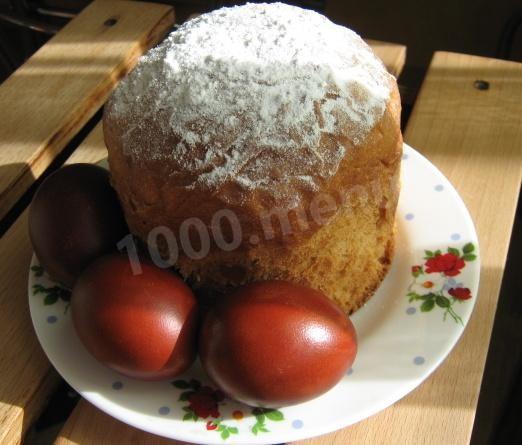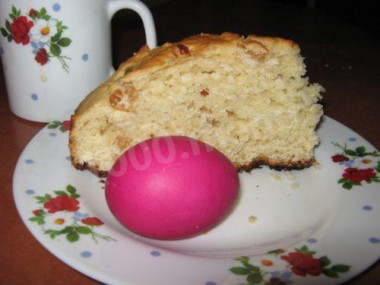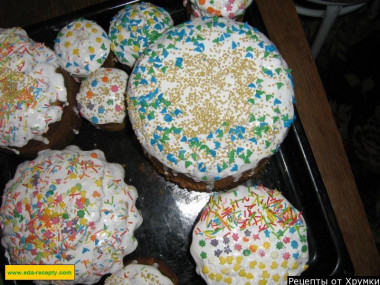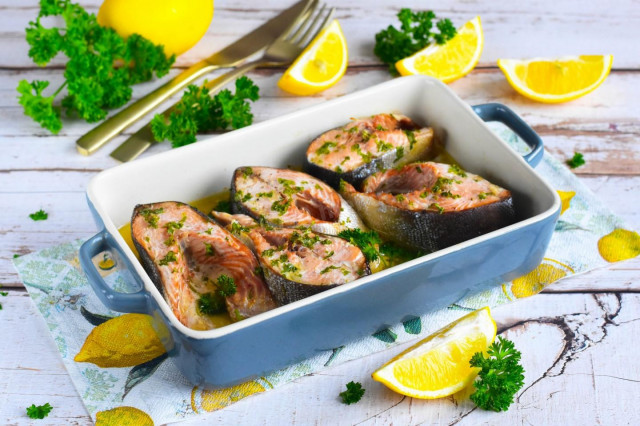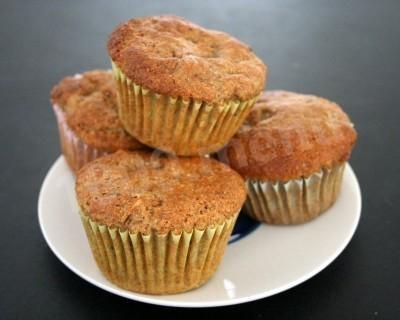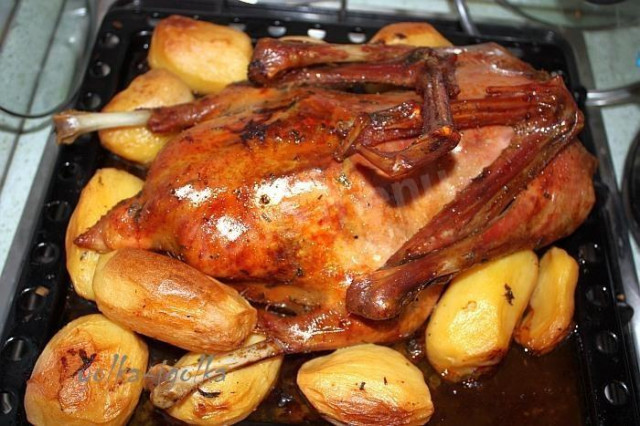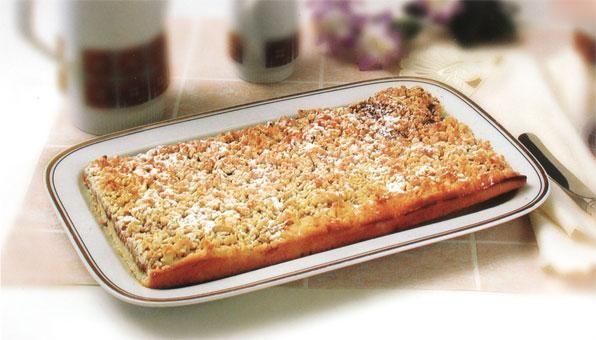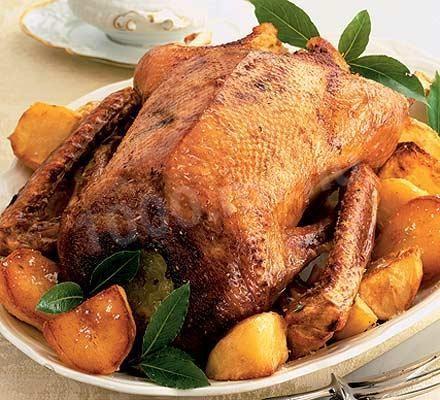Composition / ingredients
Step-by-step cooking
Step 1:
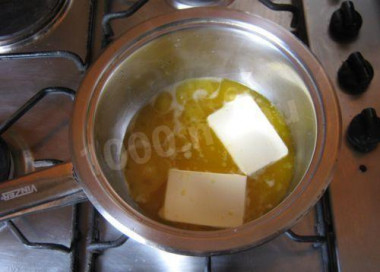
To begin with, we make a sourdough: we dilute yeast and sugar in a small amount of warm milk, add a little flour, mix and leave it in a warm place to approach. Melt the butter on the stove and cool it.
Step 2:
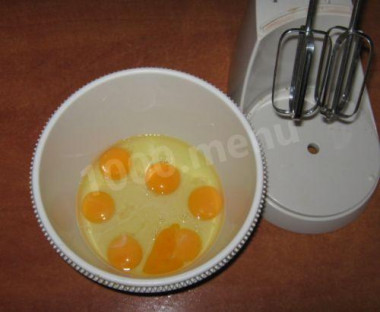
Beat eggs in a mixer together with sugar to a thick foam.
Step 3:
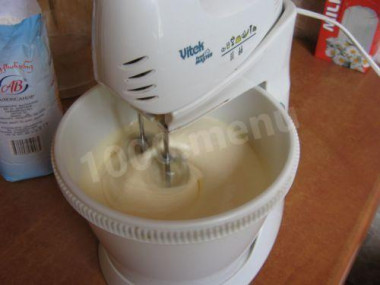
Like this.
Step 4:
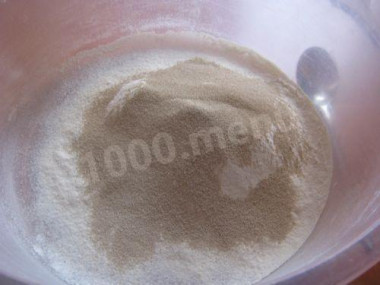
Sift the flour. If there is confidence in dry yeast (that they are definitely good), then add dry active yeast to the flour immediately - 2 tbsp.l. If you made a sourdough, then add it to the flour.
Step 5:
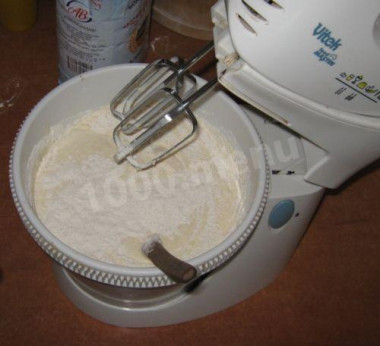
Add sour cream to the eggs (not from the refrigerator!), warm milk and gradually stir in the flour.
Step 6:
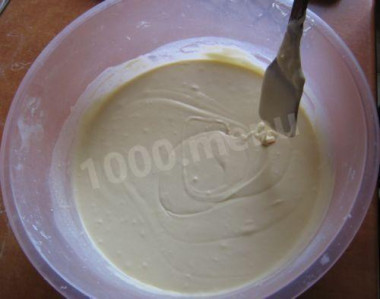
At the very end, add the melted butter. Since the dough for cakes should fit several times, we do not put all the flour at once, we leave it "for later". That is, the "first dough" should turn out to be runny. The "second dough" is slightly denser. And finally, the third dough is smooth, elastic, not sticking to the hands. And the consistency of more or less thick sour cream.
Step 7:
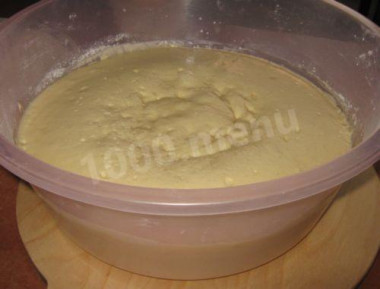
Add the sourdough to the "first dough", mix gently and put it in a warm place, covered with a napkin.
Step 8:
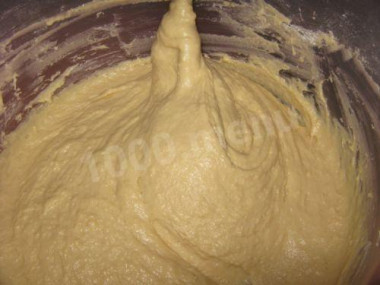
The dough should rise three times. Each time it needs to be thoroughly kneaded for at least five minutes. Add flour and add vegetable oil. Actually, vegetable oil is needed in order to lubricate their hands. The dough is kneaded only by hands.
Step 9:
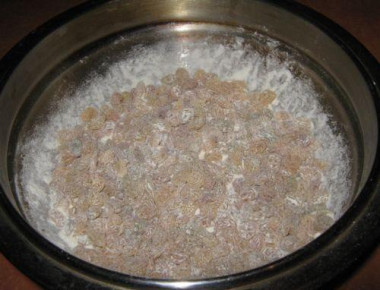
For the third time, add the raisins washed, dried and rolled in flour to the dough.
Step 10:
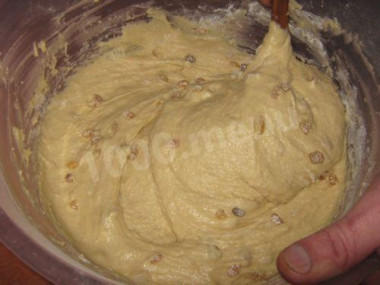
Mix.
Step 11:
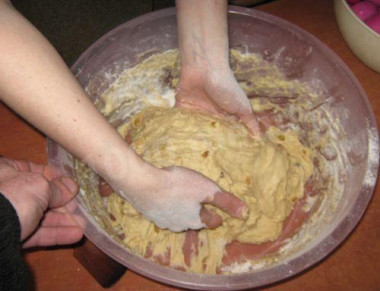
Knead with your hands.
Step 12:
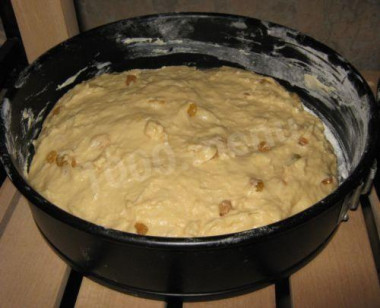
The fourth time the dough rises already in the forms (we fill the forms by one third). The surface of the cakes can be smeared with raw yolk (although I do not do this myself) or already ready to smear with vegetable oil on top.
Step 13:
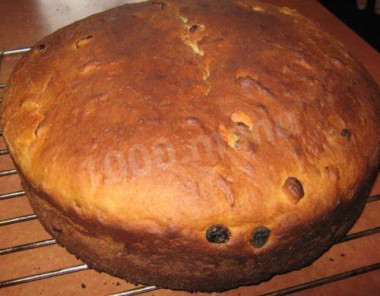
Grease the molds with oil, and cover the bottom with parchment paper. Ready Easter cakes will be not so much airy as semi-airy and, what is especially important for me personally, "wet" and not dry!
Step 14:
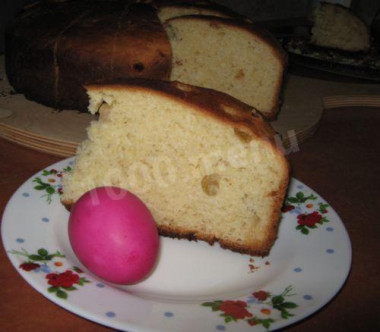
Happy Easter to you!
It takes a long time to cook such a rich cake. In our family, it always takes a whole day and almost a whole night. But if the recipe is reduced, then you can manage in four hours (counting the rise of the dough).
One more thing: we always bake Easter cakes with fresh yeast, they are indicated in the recipe. I don't know how many dry ones I need to put, because I haven't tried it. I still recommend buying fresh ones.
Yes! In order for the dough to fit into the container and it had a place to rise (if you make cakes according to the first recipe), take a standard enameled bucket. It may sound funny, but it's very convenient;))
Recipe of pastry cakes specially for large families:
Milk – 1 l;
wheat flour – 4 kg;
eggs – 30 pieces;
sour cream – 1 kg;
butter – 1 kg;
sugar – 2 kg;
raisins – 450 g;
fresh yeast – 75 g;
sunflower oil – 100 ml;
vanilla;
salt.
Caloric content of the products possible in the composition of the dish
- Whole cow's milk - 68 kcal/100g
- Milk 3.5% fat content - 64 kcal/100g
- Milk 3.2% fat content - 60 kcal/100g
- Milk 1.5% fat content - 47 kcal/100g
- Concentrated milk 7.5% fat content - 140 kcal/100g
- Milk 2.5% fat content - 54 kcal/100g
- Sour cream with 30% fat content - 340 kcal/100g
- Sour cream of 25 % fat content - 284 kcal/100g
- Sour cream with 20 % fat content - 210 kcal/100g
- Sour cream of 10% fat content - 115 kcal/100g
- Sour cream - 210 kcal/100g
- Chicken egg - 157 kcal/100g
- Egg white - 45 kcal/100g
- Egg powder - 542 kcal/100g
- Egg yolk - 352 kcal/100g
- Ostrich egg - 118 kcal/100g
- Pressed yeast - 109 kcal/100g
- Granulated sugar - 398 kcal/100g
- Sugar - 398 kcal/100g
- Vanilla - 288 kcal/100g
- Butter 82% - 734 kcal/100g
- Amateur unsalted butter - 709 kcal/100g
- Unsalted peasant butter - 661 kcal/100g
- Peasant salted butter - 652 kcal/100g
- Melted butter - 869 kcal/100g
- Raisins - 280 kcal/100g
- Kishmish - 279 kcal/100g
- Vegetable oil - 873 kcal/100g
- Salt - 0 kcal/100g
- Wheat flour - 325 kcal/100g

